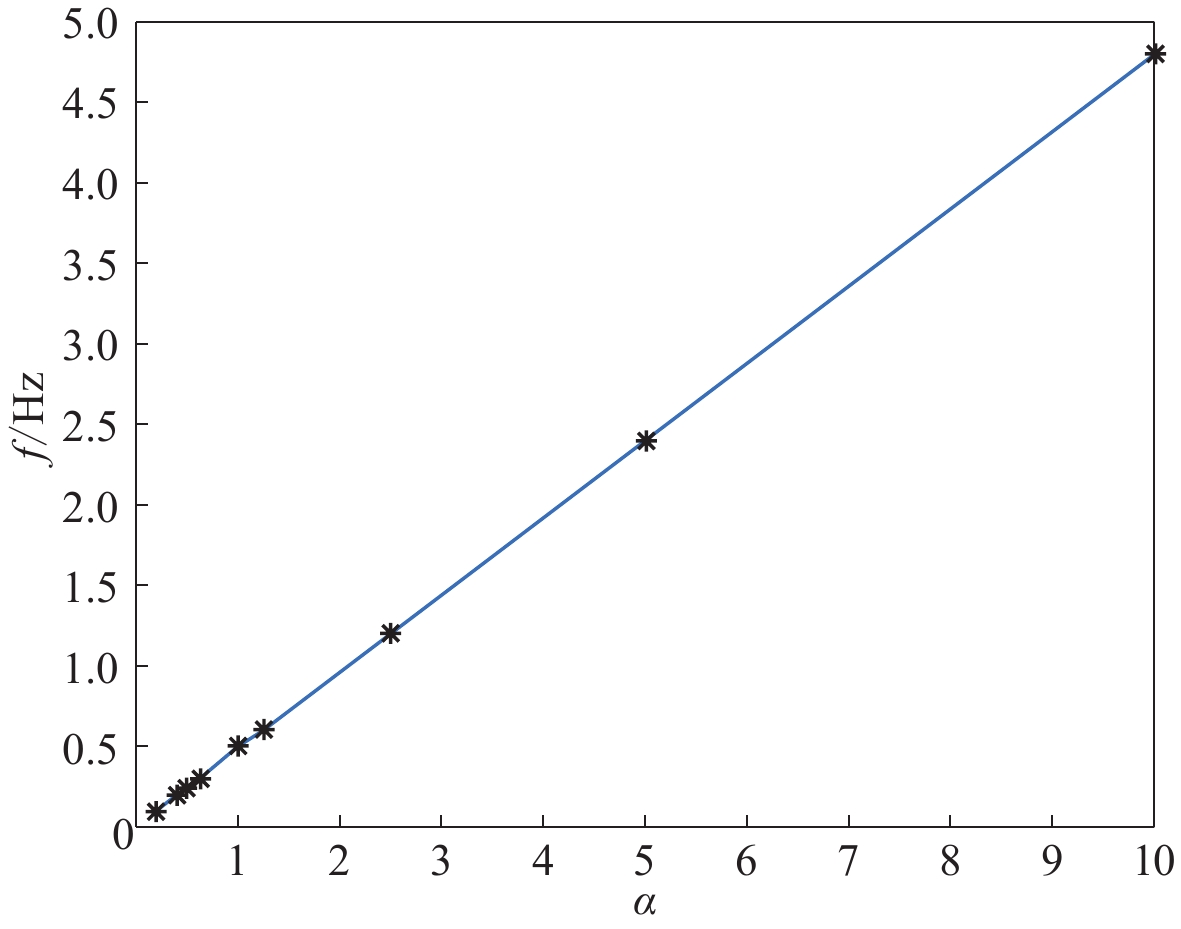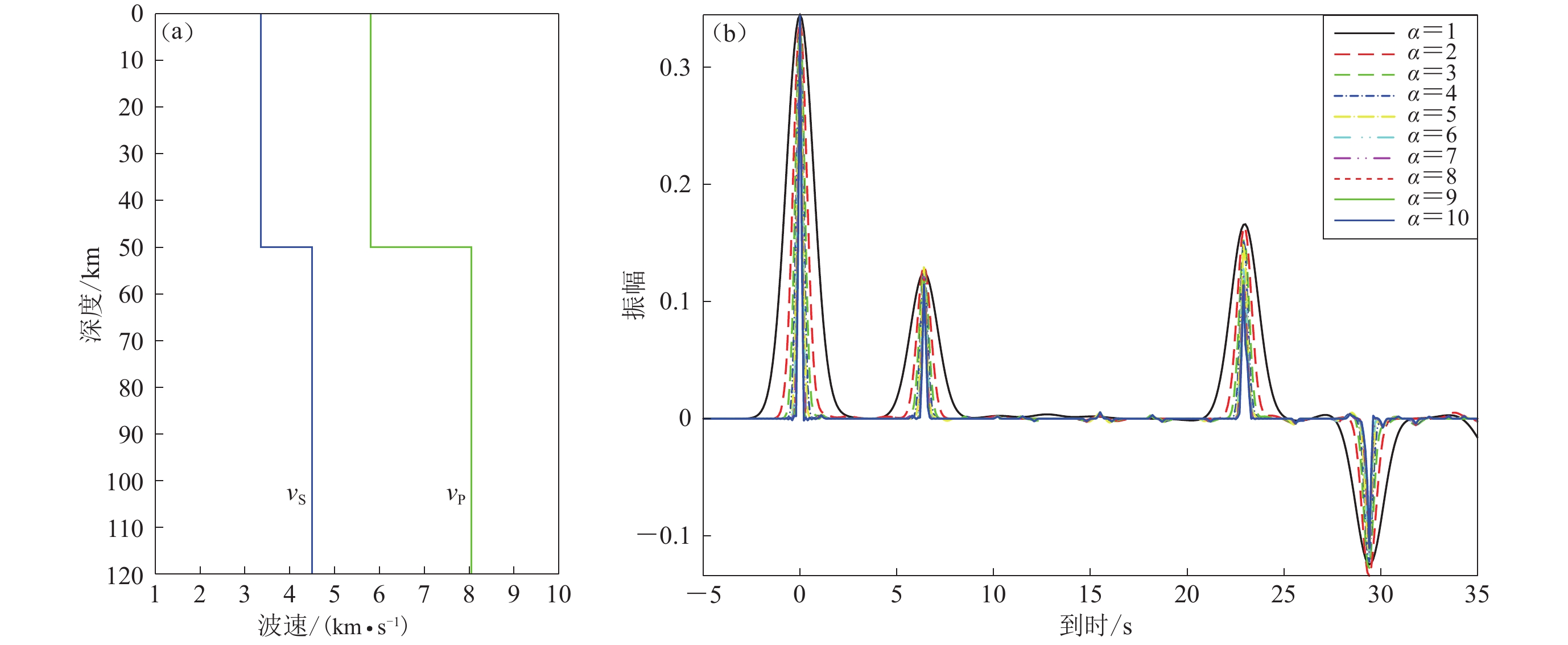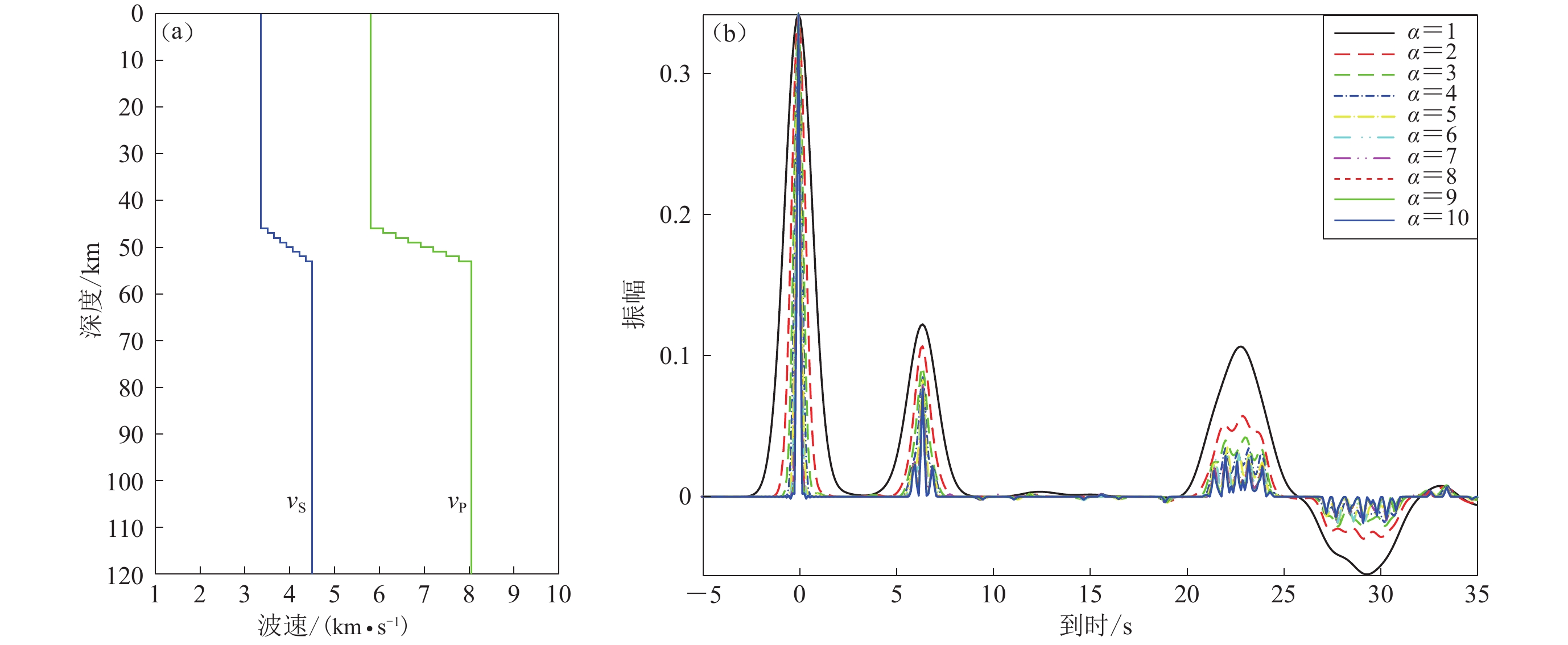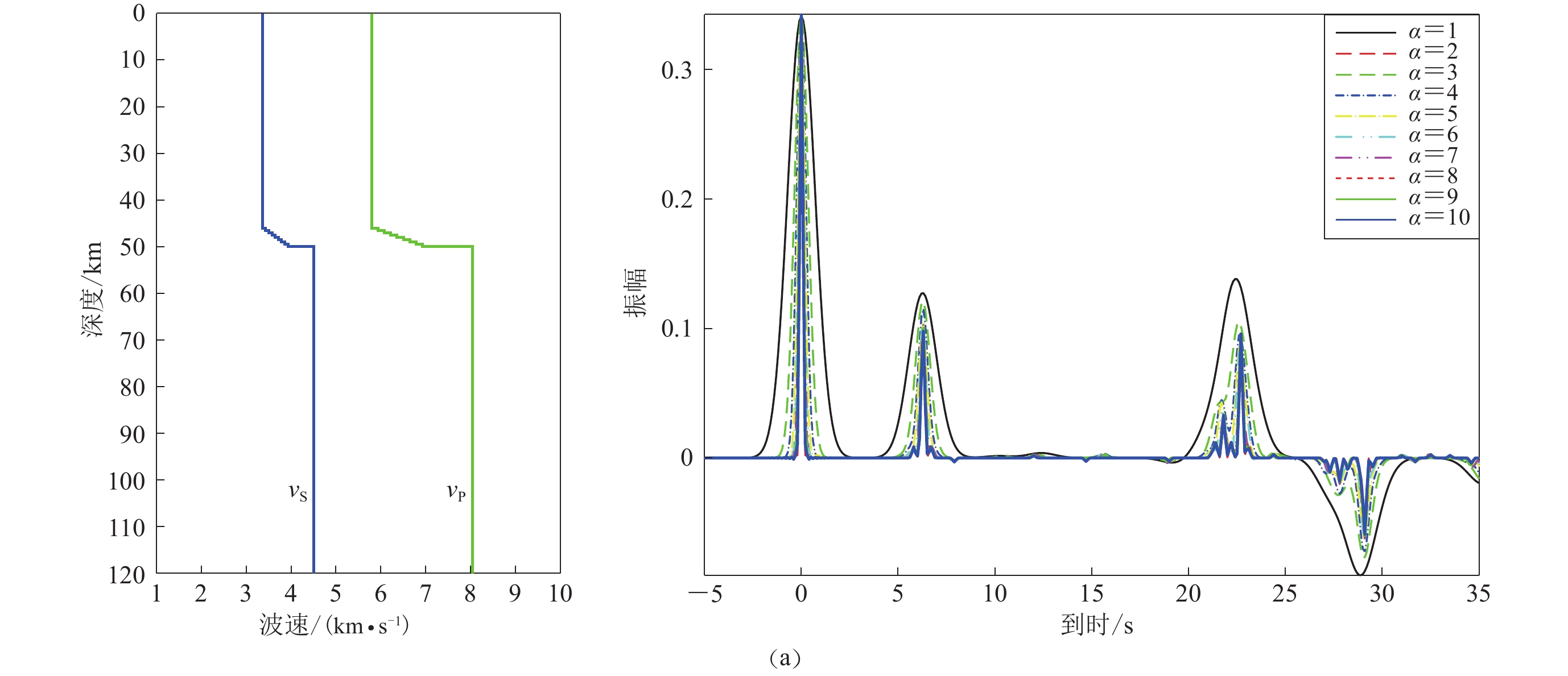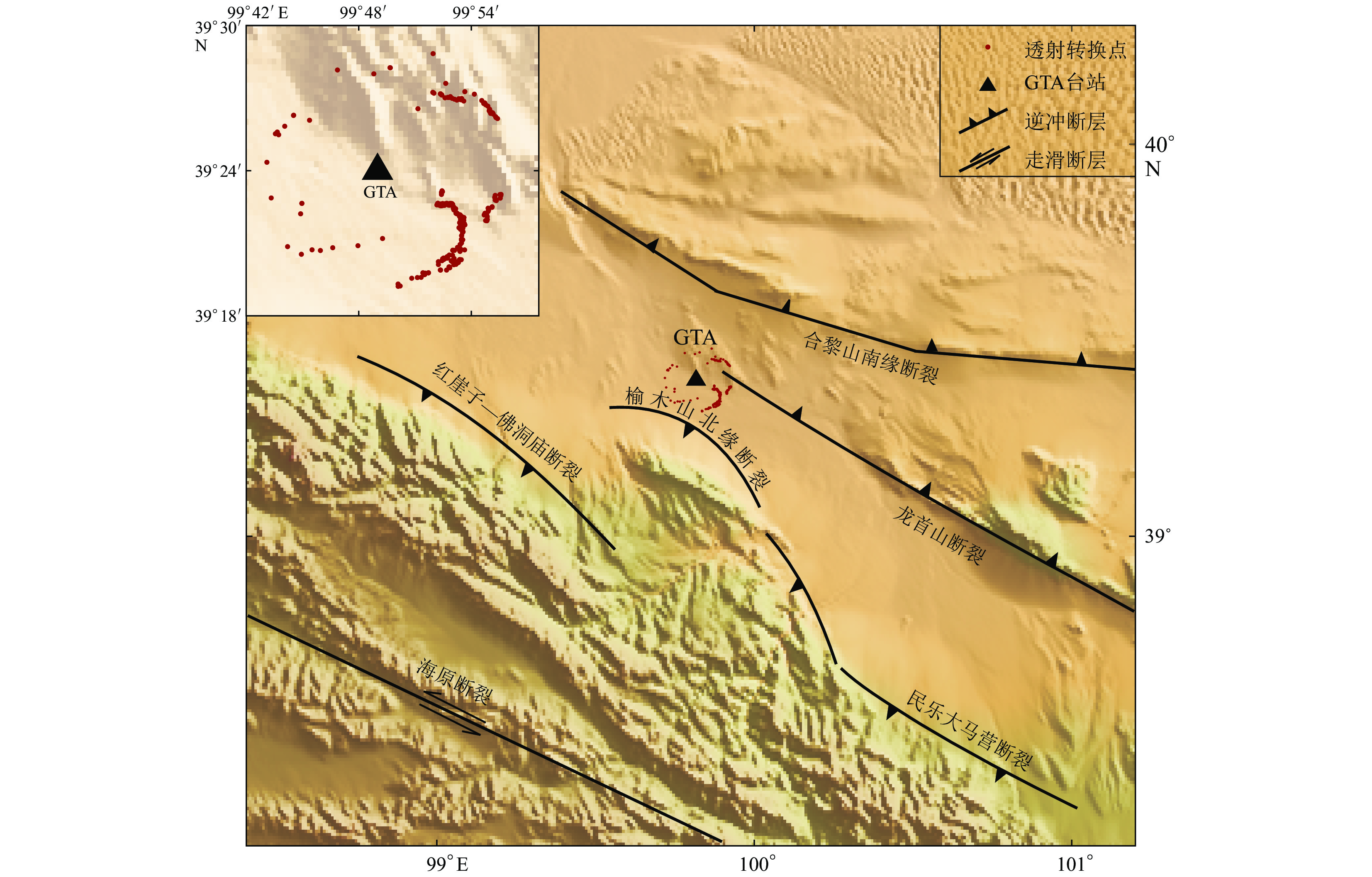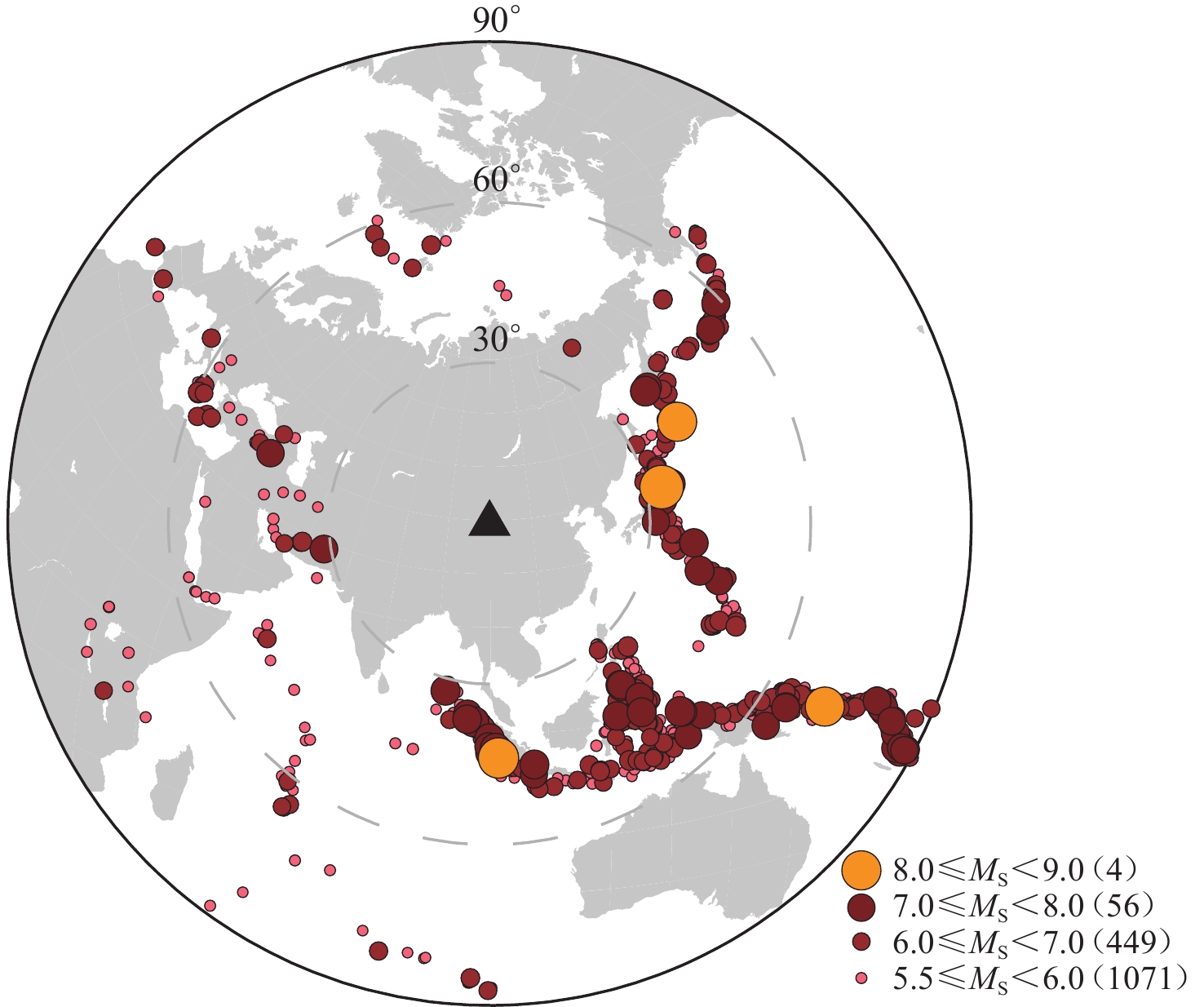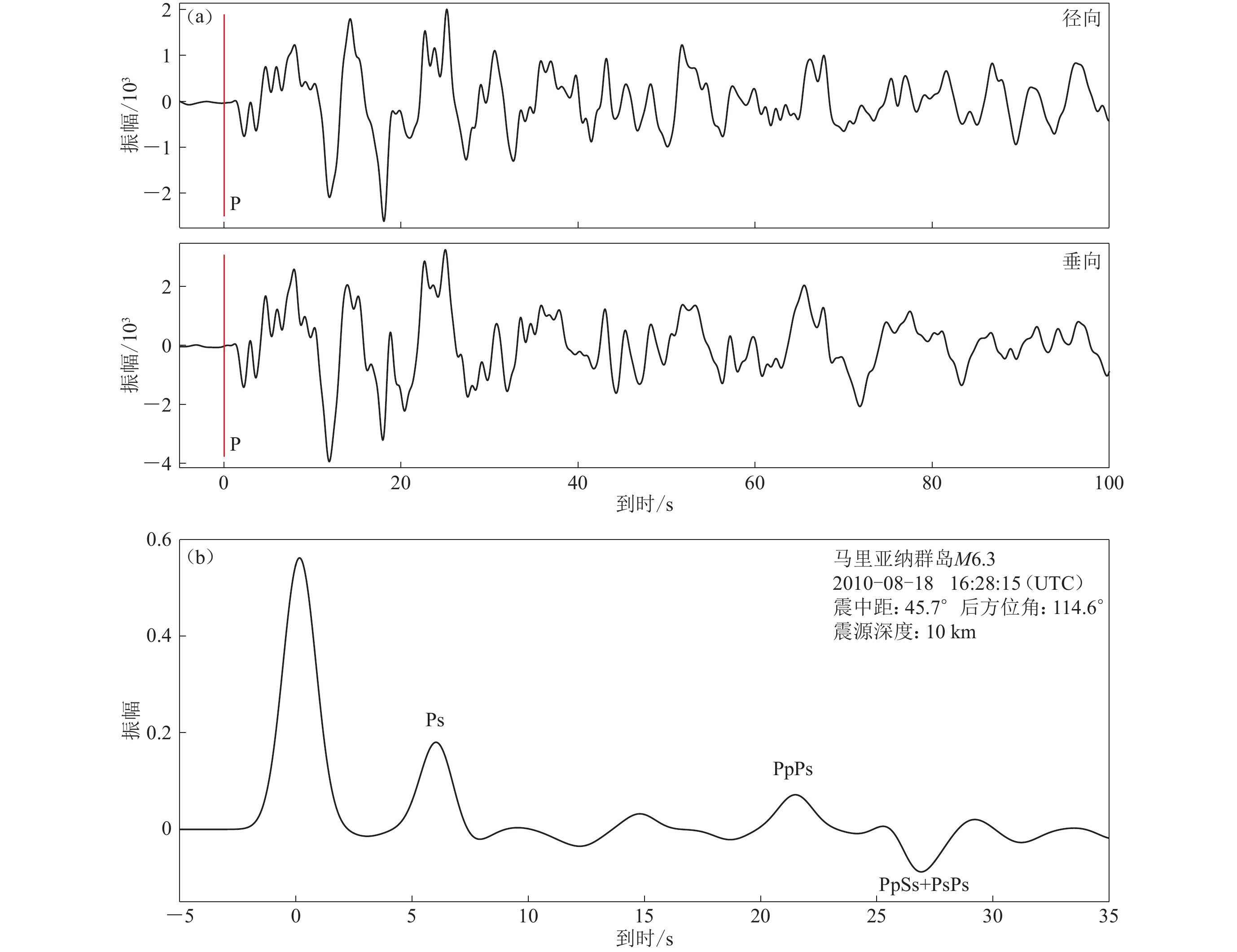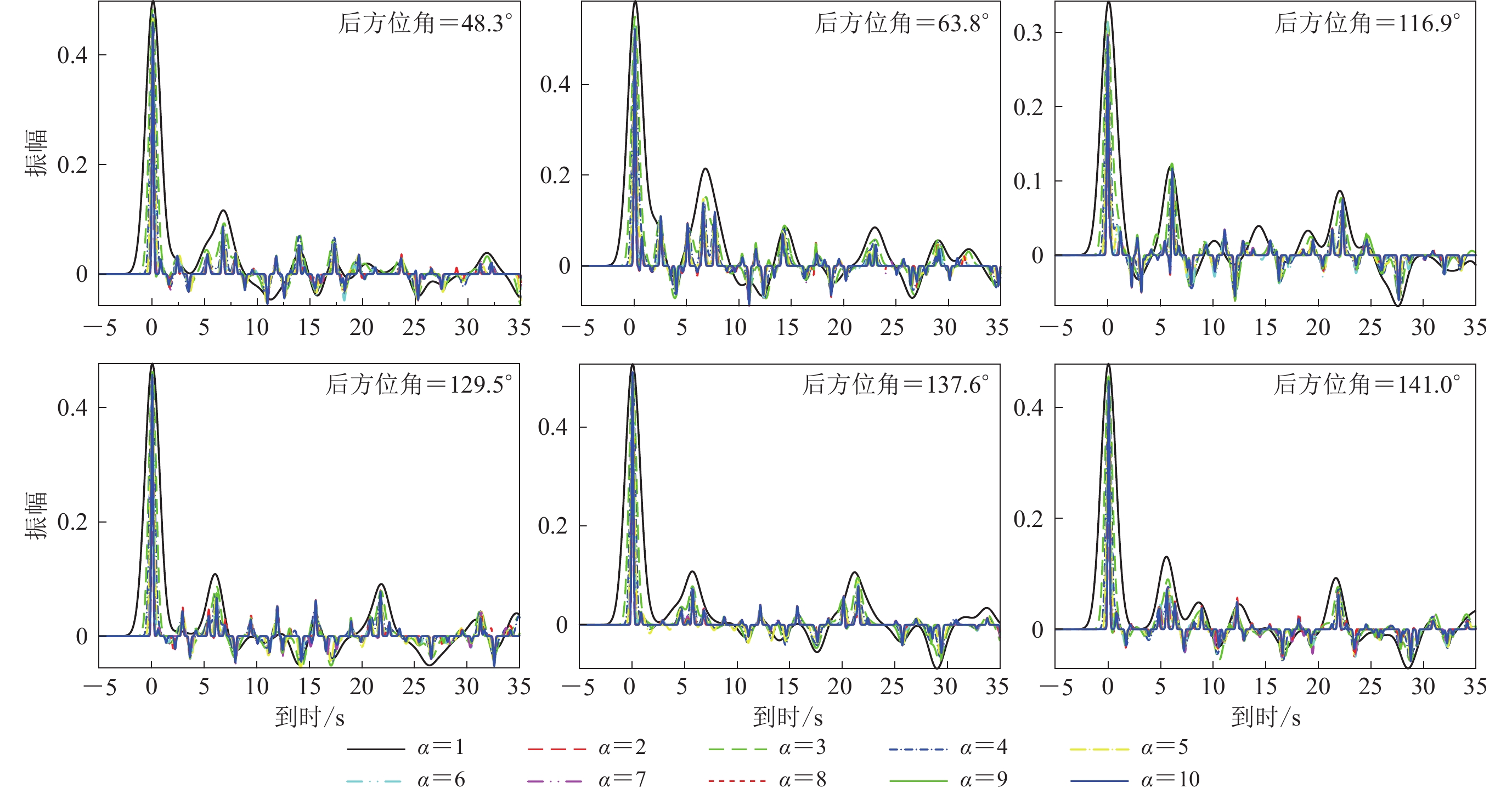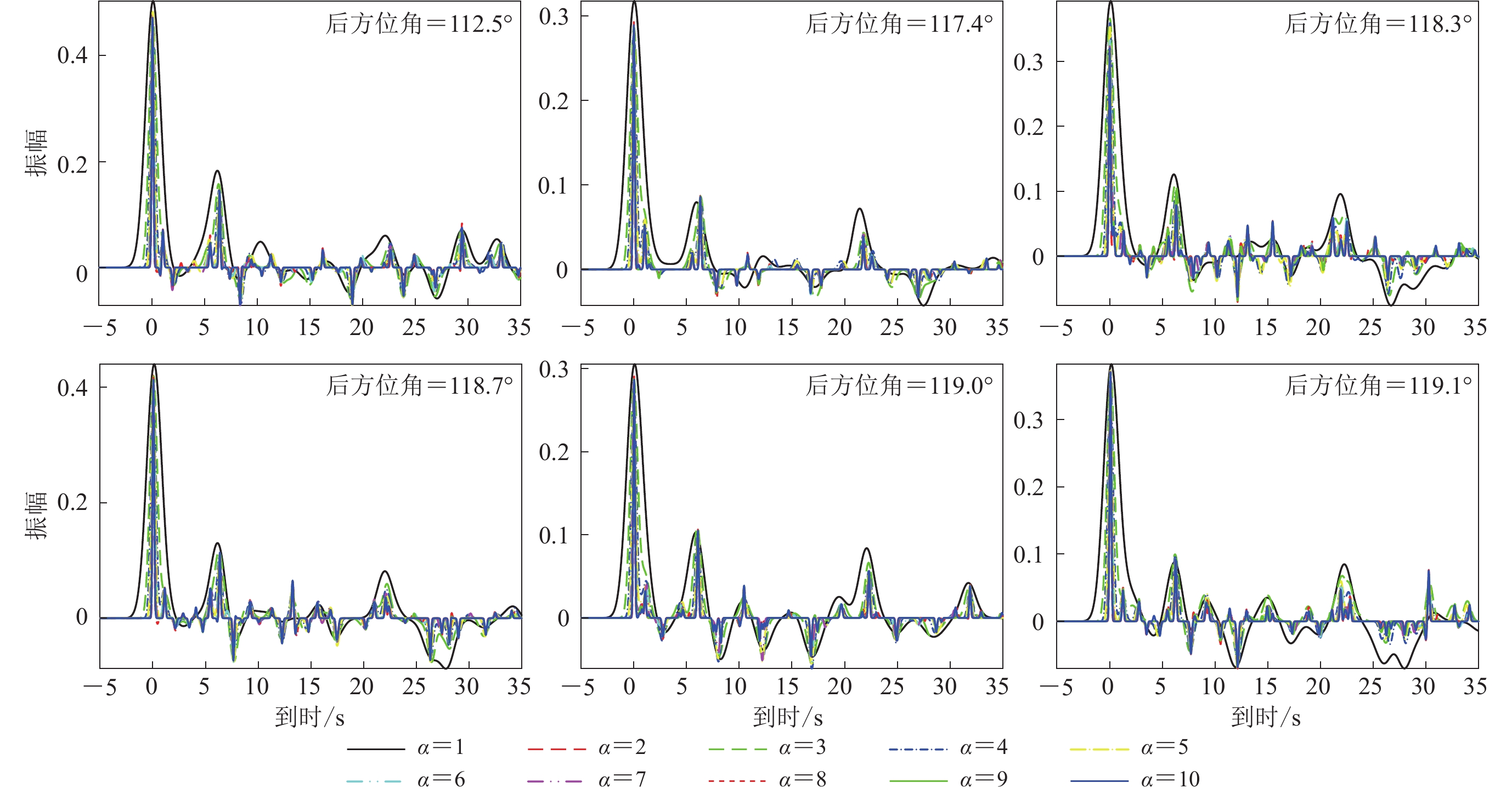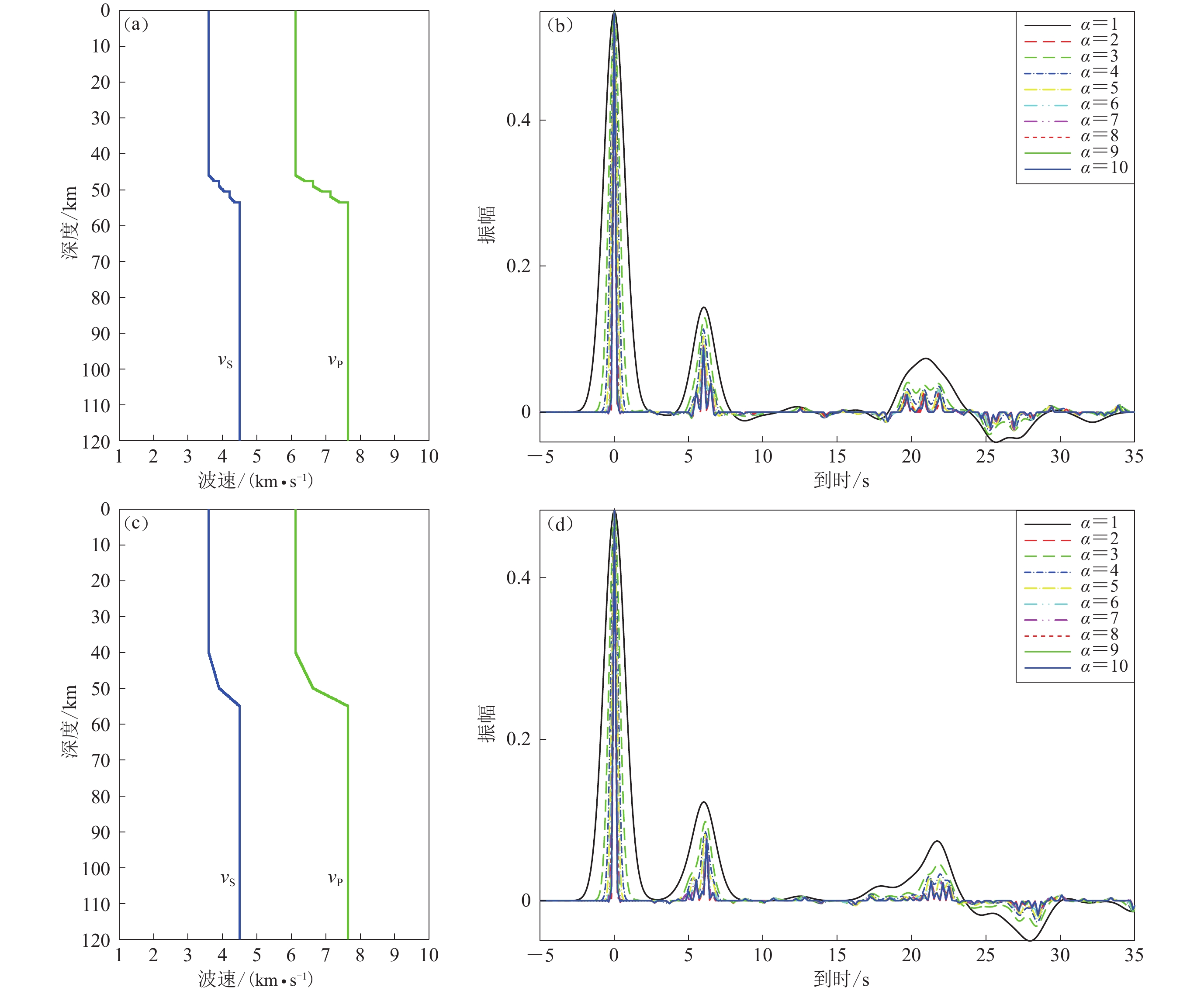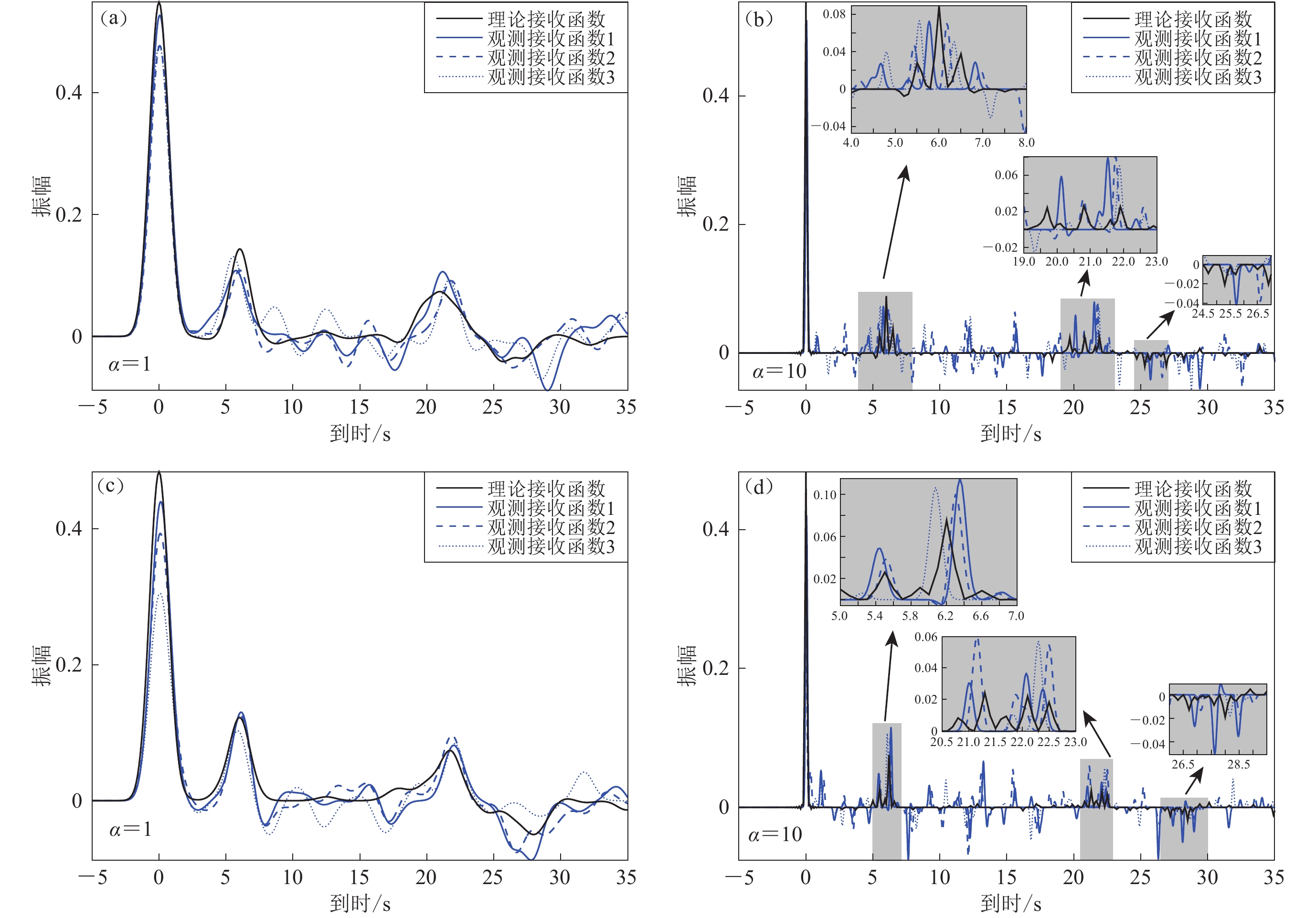Constraining Moho characteristics with frequency-dependence of receiver function and its application
-
摘要:
基于不同莫霍面模型的全波形理论地震图,计算了不同频率的接收函数,分析对比了不同形态莫霍面在不同频率上的接收函数变化特征。数值试验结果显示,当莫霍面的形态复杂时,高频接收函数上P−S转换波和多次波会出现多峰值特征。之后对不同形态莫霍面的模型在不同频率的接收函数进行了分类总结,据此判别实际观测资料所表征的莫霍面性质。以位于青藏高原东北缘的高台(GTA)地震台为例,分析了该台站不同频率的接收函数。结果表明,该台站下方莫霍面总体为遵循同一变化规律的速度过渡带,但在沿龙首山断裂方向附近速度变化不同于主要变化方式。基于此,通过对观测结构进行拟合构建了该台站下方地壳及莫霍面模型,并结合地质学和岩石学等方面的结果对这种莫霍面形成的原因进行了探讨,进而推断此种莫霍面是由于多种构造因素以及上地幔热物质上涌引起地区壳幔物质的分异与交换所导致。
Abstract:Based on the full-waveform theoretical seismograms of different Moho velocity models, the receiver functions of different frequencies are calculated, and the performances of different Moho morphologies on receiver functions at different frequencies are analyzed and compared. The numerical results show that when the Moho is complex, the P-S converted wave and the multiple wave will have multi-peak characteristics on the high-frequency receiver functions. Receiver functions of different frequencies based on different Moho velocity models are classified and summarized, and the Moho properties revealed by the actual observation data can be discriminated. Taking the seismic station Gaotai (GTA) in the northeastern margin of Tibe-tan Plateau as an example, this paper analyzed the effects of the receiver functions of different frequencies on the Moho morphology beneath the station. The results show that Moho beneath the station is a velocity transitional zone in which velocity varies in a dominant regular, except for the velocity varies at the azimuth along the Longshoushan fault. Furthermore, we built the Moho velocity model beneath the station by fitting the observation structure. Combining the results of geology and petrology, the causes of this Moho morphology were discussed. It is inferred that various tectonic factors and the upwelling and bottom invasion of the upper mantle thermal materials give rise to the differentiation and exchange of crust-mantle materials in this area, and then the Moho morphology mentioned above is resulted in.
-
Keywords:
- receiver function /
- frequency /
- Moho morphology /
- velocity model
-
-
图 5 速度非线性增加的莫霍面模型(左)及其对应的不同频率理论接收函数(右)
图(a)中46—50 km深度之间的速度为梯度变化与急剧变化的组合模型
Figure 5. Velocity models with different non-gradient transition zone of the Moho (left panels)and the corresponding synthetic receiver functions (right panels)
In Fig. (a) Moho is a combination of a gradient transition zone and a sharpness in the depth from 46 km to 50 km
图 12 GTA台站下方两种莫霍面速度模型及对应的不同频率理论接收函数
图(a)和图(b)为主要莫霍面速度模型及其对应的不同频率理论接收函数;图(c)和图(d)为110°—120°后方位角范围内可能存在的另一种莫霍面速度模型及其对应不同滤波因子的理论接收函数
Figure 12. Two Moho models beneath the station GTA and their corresponding theoretical receiver functions with different frequencies
Figs. (a) and (b) are the dominant Moho velocity model beneath GTA and its corresponding theoretical receiver functions with different α;Figs. (c) and (d) are another Moho velocity model with back azimuth of 110°−120° and its corresponding theoretical receiver functions with different frequencies
图 13 GTA下方主要莫霍面模型及110°—120°后方位角莫霍面模型对应的理论接收函数与实际接收函数的对比
图(a)和图(b)分别为α=1和α=10时图12a模型理论接收函数与三条实际观测接收函数的对比;图(c)和图(d)分别为α=1和α=10时12c模型理论接收函数与三条实际观测接收函数的对比
Figure 13. Comparison of the theoretical receiver functions and the observations with different α corres-ponding to the dominant Moho velocity model and the model at the 110°−120° azimuth beneath GTA
Figs. (a) and (b) show the comparison of the theoretical receiver function of the model of Fig.12a with three observations at α=1 and α=10,respectively;Figs. (c) and (d) give the comparison of the theoretical receiver function of the model of Fig.12c with three observations at α=1 and α=10,respectively
-
陈九辉,刘启元. 2000. 横向非均匀介质远震体波接收函数的波场特征[J]. 地震学报,22(6):614–621. doi: 10.3321/j.issn:0253-3782.2000.06.007 Chen J H,Liu Q Y. 2000. Wavefield features of teleseismic receiver function in laterally inhomogeneous media[J]. Acta Seismologica Sinica,22(6):614–621 (in Chinese).
陈九辉,刘启元,李顺成,郭飚,赖院根. 2005. 青藏高原东北缘—鄂尔多斯地块地壳上地幔S波速度结构[J]. 地球物理学报,48(2):333–342. doi: 10.3321/j.issn:0001-5733.2005.02.015 Chen J H,Liu Q Y,Li S C,Guo B,Lai Y G. 2005. Crust and upper mantle S-wave velocity structure across northeastern Tibetan Plateau and Ordos block[J]. Chinese Journal of Geophysics,48(2):333–342 (in Chinese).
董治平,张元生. 2007. 河西走廊中部地区三维速度结构研究[J]. 地球学报,28(3):270–276. doi: 10.3321/j.issn:1006-3021.2007.03.005 Dong Z P,Zhang Y S. 2007. A study of the 3-D velocity structure in central Hexi Corridor[J]. Acta Geoscientica Sinica,28(3):270–276 (in Chinese).
段俊,钱壮志,焦建刚,鲁浩,冯延清. 2015. 甘肃龙首山岩带西井镁铁质岩体成因及其构造意义[J]. 吉林大学学报(地球科学版),45(3):832–846. doi: 10.13278/j.cnki.jjuese.201503115 Duan J,Qian Z Z,Jiao J G,Lu H,Feng Y Q. 2015. Genesis of Xijing intrusion from Longshoushan terrane and the tectonic significance[J]. Journal of Jilin University (Earth Science Edition)
,45(3):832–846 (in Chinese). doi: 10.13278/j.cnki.jjuese.201503115 高锐,熊小松,李秋生,卢占武. 2009. 由地震探测揭示的青藏高原莫霍面深度[J]. 地球学报,30(6):761–773. doi: 10.3321/j.issn:1006-3021.2009.06.008 Gao R,Xiong X S,Li Q S,Lu Z W. 2009. The Moho depth of Qinghai-Tibet Plateau revealed by seismic detection[J]. Acta Geoscientica Sinica,30(6):761–773 (in Chinese).
李光品,高尔根,徐果明. 2000. 中国西部地壳上地幔速度和Q β结构[J]. 地质与勘探,36(6):58–61. Li G P,Gao E G,Xu G M. 2000. Velocity and Q β in the western continetal China[J]. Geology and Prospecting,36(6):58–61 (in Chinese).
李松林,张先康,张成科,赵金仁,成双喜. 2002. 玛沁—兰州—靖边地震测深剖面地壳速度结构的初步研究[J]. 地球物理学报,45(2):210–217. doi: 10.3321/j.issn:0001-5733.2002.02.007 Li S L,Zhang X K,Zhang C K,Zhao J R,Cheng S X. 2002. A preliminary study on the crustal velocity structure of Maqin-Lanzhou-Jingbian by means of deep seismic sounding profile[J]. Chinese Journal of Geophysics,45(2):210–217 (in Chinese).
刘明军,李松林,方盛明,樊计昌,赵丽. 2008. 利用地震波速研究青藏高原东北缘地壳组成及其动力学[J]. 地球物理学报,51(2):412–430. doi: 10.3321/j.issn:0001-5733.2008.02.014 Liu M J,Li S L,Fang S M,Fan J C,Zhao L. 2008. Study on crustal composition and geodynamics using seismic velocities in the northeastern margin of the Tibetan Plateau[J]. Chinese Journal of Geophysics,51(2):412–430 (in Chinese).
钱银苹,沈旭章. 2017. 接收函数确定Moho面速度和密度跃变的方法研究及应用[J]. 地球物理学报,60(8):2980–2992. doi: 10.6038/cjg20170807 Qian Y P,Shen X Z. 2017. The approach and application of constraining velocity and density contrasts across the Moho using receiver functions[J]. Chinese Journal of Geophysics,60(8):2980–2992 (in Chinese). doi: 10.6038/cjg20170807
谭萍,陈赟,孙维昭,李玮,唐国彬,崔田. 2018. 一种改进的适应于倾斜Moho面的H-κ-θ叠加方法及应用[J]. 地球物理学报,61(9):3689–3700. doi: 10.6038/cjg2018M0032 Tan P,Chen Y,Sun W Z,Li W,Tang G B,Cui T. 2018. An improved H-κ-θ stacking method to determine the crustal thickness and bulk vP/vS ratios in the case of a slant Moho interface[J]. Chinese Journal of Geophysics,61(9):3689–3700 (in Chinese). doi: 10.6038/cjg2018M0032
滕吉文. 2006. 地球深部壳-幔边界的层束精细结构与物理属性研究[J]. 吉林大学学报(地球科学版),36(1):1–23. Teng J W. 2006. Research on layer-bundle fine structures and physical attributes of crust-mantle boundary in deep earth[J]. Journal of Jilin University (Earth Science Edition)
,36(1):1–23 (in Chinese). 王椿镛,楼海,吕智勇,吴建平,常利军,戴仕贵,尤惠川,唐方头, Zhu L P,Silver P. 2008. 青藏高原东部地壳上地幔S波速度结构: 下地壳流的深部环境[J]. 中国科学:D辑,38(1):22–32. Wang C Y,Lou H,Lü Z Y,Wu J P,Chang L J,Dai S G,You H C,Tang F T,Zhu L P,Silver P. 2008. S-wave velocity structure of the upper crust in the eastern crust of the Qinghai-Tibet Plateau: The deep environment of the lower crust[J]. Science in China:Series D,51(2):263–274 (in Chinese).
袁道阳,张培震,刘百篪,甘卫军,毛凤英,王志才,郑文俊,郭华. 2004. 青藏高原东北缘晚第四纪活动构造的几何图像与构造转换[J]. 地质学报,78(2):270–278. doi: 10.3321/j.issn:0001-5717.2004.02.017 Yuan D Y,Zhang P Z,Liu B C,Gan W J,Mao F Y,Wang Z C,Zheng W J,Guo H. 2004. Geometrical imagery and tectonic transformation of Late Quaternary active tectonics in northeastern margin of Qinghai-Xizang Plateau[J]. Acta Geologica Sinica,78(2):270–278 (in Chinese).
张洪双,田小波,滕吉文. 2009. 接收函数方法估计Moho倾斜地区的地壳速度比[J]. 地球物理学报,52(5):1243–1252. doi: 10.3969/j.issn.0001-5733.2009.05.013 Zhang H S,Tian X B,Teng J W. 2009. Estimation of crustal vP/vS with dipping Moho from receiver functions[J]. Chinese Journal of Geophysics,52(5):1243–1252 (in Chinese). doi: 10.3969/j.issn.0001-5733.2009.05.013
张洪双,高锐,田小波,滕吉文,李秋生,叶卓,刘震,司少坤. 2015. 青藏高原东北缘地壳S波速度结构及其动力学含义:远震接收函数提供的证据[J]. 地球物理学报,58(11):3982–3992. doi: 10.6038/cjg20151108 Zhang H S,Gao R,Tian X B,Teng J W,Li Q S,Ye Z,Liu Z,Si S K. 2015. Crustal S wave velocity beneath the northeastern Tibetan Plateau inferred from teleseismic P wave receiver functions[J]. Chinese Journal of Geophysics,58(11):3982–3992 (in Chinese). doi: 10.6038/cjg20151108(inChinese)
张先康,李松林,王夫运,嘉世旭,方盛明. 2003. 青藏高原东北缘、鄂尔多斯和华北唐山震区的地壳结构差异:深地震测深的结果[J]. 地震地质,25(1):52–60. doi: 10.3969/j.issn.0253-4967.2003.01.006 Zhang X K,Li S L,Wang F Y,Jai S X,Fang S M. 2003. Differences of crustal structures in northeastern edge of Tibet Plateau,Ordos and Tangshan earthquake region in North China:Results of deep seismic sounding[J]. Seismology and Geology,25(1):52–60 (in Chinese).
赵文津,Mechie J,冯梅,史大年,薛光琪,宿和平,宋洋,杨宏伟,刘志伟. 2014. 祁连山造山作用与岩石圈地幔的特型结构构造[J]. 中国地质,41(5):1411–1423. doi: 10.3969/j.issn.1000-3657.2014.05.001 Zhao W J,Mechie J,Feng M,Shi D N,Xue G Q,Su H P,Song Y,Yang H W,Liu Z W. 2014. Cenozoic orogenesis of the Qilian mountain and the lithosphere mantle tectonic framework beneath it[J]. Geology in China,41(5):1411–1423 (in Chinese).
赵亚云. 2016. 龙首山中段古生代花岗岩岩石学、地球化学特征及地质意义[D]. 上海: 东华理工大学: 8, 10. Zhao Y Y. 2016. Petrology, Geochemistry Characteristics and Geological Significance of Paleozoic Granites in Middle Longshou Mountains, Gansu Province[D]. Shanghai: East China University of Technology: 8, 10 (in Chinese).
周蕙兰. 1990. 地球内部物理[M]. 北京: 地震出版社: 147 Zhou H L. 1990. Internal Physics of the Earth[M]. Beijing: Seismological Press: 147 (in Chinese).
周民都,吕太乙,张元生,阮爱国. 2000. 青藏高原东北缘地质构造背景及地壳结构研究[J]. 地震学报,22(6):645–653. doi: 10.3321/j.issn:0253-3782.2000.06.011 Zhou M D,Lü T Y,Zhang Y S,Ruan A G. 2000. The geological structure background and the crustal structure in the northeastern margin of the Qinghai-Tibetan Plateau[J]. Acta Seismologica Sinica,22(6):645–653 (in Chinese).
Ammon C J. 1991. The isolation of receiver effects from teleseismic P waveforms[J]. Bull Seismol Soc Am,81(6):2504–2510.
Ammon C J,Randall G E,Zandt G. 1990. On the nonuniqueness of receiver function inversions[J]. J Geophys Res,95(B10):15303–15318. doi: 10.1029/JB095iB10p15303
Burdick L J,Langston C A. 1977. Modeling crustal structure through the use of converted phases in teleseismic body-wave forms[J]. Bull Seismol Soc Am,67(3):677–691.
Hale L D,Thompson G A. 1982. The seismic reflection character of the continental Mohorovicic discontinuity[J]. J Geophys Res,87(6):4625–4635.
Jarchow C M,Thompson G A. 1989. The nature of the Mohorovicic discontinuity[J]. Annu Rev Earth Planet Sci,17(1):475–506. doi: 10.1146/annurev.ea.17.050189.002355
Julià J. 2007. Constraining velocity and density contrasts across the crust-mantle boundary with receiver function amplitudes[J]. Geophys J Int,171(1):286–301. doi: 10.1111/j.1365-2966.2007.03502.x
Lei J S,Li Y,Xie F R,Teng J W,Zhang G W,Sun C Q,Zha X H. 2014. Pn anisotropic tomography and dynamics under eastern Tibetan Plateau[J]. J Geophys Res,119(3):2174–2198. doi: 10.1002/2013JB010847
Ligorría J P,Ammon C J. 1999. Iterative deconvolution and receiver-function estimation[J]. Bull Seismol Soc Am,89(5):1395–1400.
Ma Y L. 2013. YASEIS: Yet another computer program to calculate synthetic seismograms for a spherically multi-layered Earth model[C]//2013 EGU General Assembly Conference Abstracts. Vienna: EGU.
Meyer B,Tapponnier P,Bourjot L,Métivier F,Gaudemer Y,Peltzer G,Guo S M,Chen Z T. 1998. Crustal thickening in Gansu-Qinghai,lithospheric mantle subduction,and oblique,strike-slip controlled growth of the Tibet Plateau[J]. Geophys J Int,135(1):1–47. doi: 10.1046/j.1365-246X.1998.00567.x
Niu F L,James D E. 2002. Fine structure of the lowermost crust beneath the Kaapvaal craton and its implications for crustal formation and evolution[J]. Earth Planet Sci Lett,200(1/2):121–130.
Savage M K. 1998. Lower crustal anisotropy or dipping boundaries? Effects on receiver functions and a case study in New Zealand[J]. J Geophys Res,103(B7):15069–15089. doi: 10.1029/98JB00795
Sun C Q,Lei J S. 2019. Frequency-dependent Pms splitting measurements across the Longmenshan thrust belt in the eastern Tibetan Plateau[J]. J Asian Earth Sci,185:104027. doi: 10.1016/j.jseaes.2019.104027
Zhou Z G,Lei J S. 2016. Pn anisotropic tomography and mantle dynamics beneath China[J]. Phys Earth Planet Inter,257:193–204. doi: 10.1016/j.pepi.2016.06.005
Zhu L P,Kanamori H. 2000. Moho depth variation in southern California from teleseismic receiver functions[J]. J Geophys Res,105(B2):2969–2980. doi: 10.1029/1999JB900322




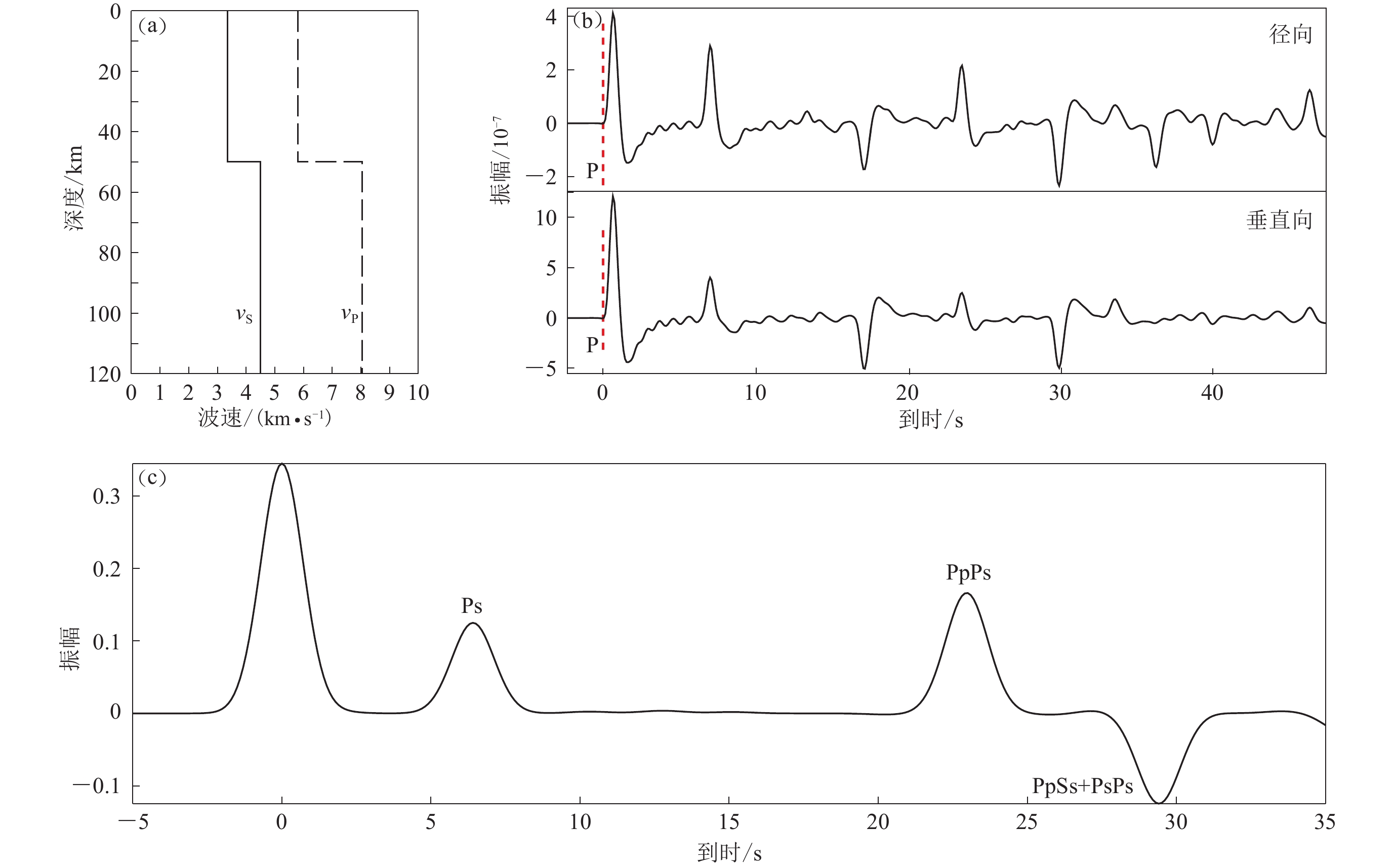
 下载:
下载:
